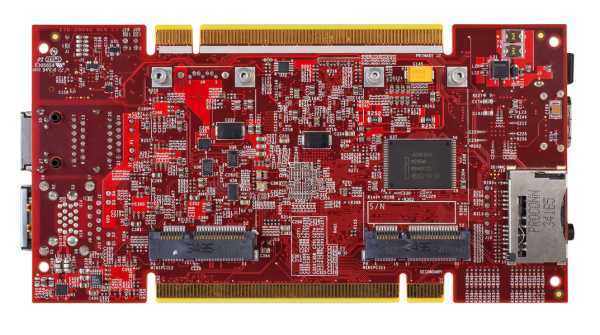
However, we recently asked managers and VPs from a number of microcontroller vendors to do just that—to offer a "filter" of device families that are key to the connected embedded systems market, or IoT, as a justification for the heavy of choice Here are some of the answers:
IN Cypress SemiconductorJack Ogawa, senior director of marketing for the microcontroller business unit, doesn't hesitate to mention the latest generation of the company's PSoC line, the PSoC6. These parts contain both programmable processor cores and programmable logic and analog functions to maximize the embedded system-on-chip. Jack says, “Our latest MCU family is PSoC 6, built on an architecture optimized for the Internet of Things (IoT). Our homes, cities and vital services are becoming smarter, demanding connectivity, enhanced processing and data protection while running on batteries. The PSoC 6 MCU addresses these needs by offering an ultra-low power, dual-core architecture with hardware security.” Their uniqueness, he continues, comes from the fact that “almost all embedded systems are mixed signals; they have both digital and analog components. PSoC MCUs have a long history of leadership in mixed-signal solutions, offering configurable, easy-to-use digital and analog peripherals and a microcontroller in a single device. A special feature is our CapSense technology, which is widely regarded as the most reliable and efficient capacitive sensor.”
Meanwhile, in Renesas, director of large-scale solutions Andy Harding couldn't resist a "proud father" response! – he says: “Frankly, they're all important for different reasons. We aim to provide customers with a choice of [with] low power consumption, high performance, integration, processors and platforms… [based on] a process technology that delivers outstanding performance and high integration [and] especially our zero wait state flash memory , which has an incredible history of reliability & data retention. But it goes beyond silicon… When we were strategizing for the next generation of MCUs, [we] knew that the market would be looking for an ARM core solution, but putting an ARM core would make us another 'me too' vendor in an already crowded space. market. We found that we needed to think beyond the silicon device, but to complete platforms that would deliver shorter design cycles, easier start of design and higher total cost of ownership.”
Harding adds, “Most of the difference is in the peripherals… we can integrate more memory than most customers need and run at full speed without waiting. And our 32-bit microcontrollers run at 240 MHz with highly efficient instructions.”
For Silicon Labs announced a special focus on the wireless microcontroller market., Oyvind Lo (Senior Manager of Strategic Marketing) and Tom Pannell (Senior Director of Marketing) call this technology hot spot “where we can make the biggest impact and meet customer needs. We offer software (wireless stack) as well as hardware. In fact, we have evolved from a chip-oriented company to a vertically oriented company that supplies chips, software, and tools. This allows us to discover more value in chips.”
“We believe that outsourcing the software stack to third parties is a recipe for disaster. We don't like the lack of clarity if there is a bug/problem as it's usually impossible to tell the difference between hardware and software. The value really lies in the relationship between software and hardware."
“Tools are also very important: the world is not perfect. If a customer wants to deploy 200 grid nodes, they need to have tools to show them how the grid works/forms. They need tools that give them insight at the package level. Our energy profiler is another key product. This tool can show which bit of code caused the energy surge.” Another distinguishing feature, the Silicon Labs team adds: “…reliable operation; some of our parts have to work reliably at temperatures up to 125C.”
“In general, if you don't care about low power, it's simple. Low power makes everything much more difficult."
For NXP, Senior Vice President and General Manager of the Microcontroller Division, Jeff Lees, had no hesitation in nominating “i.MX processors and Layerscape. Both are based on ARM and complement each other. Layerscape is designed for high-quality data processing and communications. i.MX covers a wide range of markets, consumer, automotive and more. At the lower end we have Kinetis which is also based on ARM. It is more vertical, providing connectivity for applications such as IoT. 15 years ago it was the first ARM 32 flash microcontroller, and now there is a huge variety of them."
Lees argues that this is a connection to the nascent technologies that now underpin the IoT; "We released the first 32-bit ARM flash chips. The first is related to Internet connectivity – it was designed to serve new wired connections by providing a 56K modem…[and now has power in] higher spectrum performance…applications such as energy conversion, motor control and wireless connectivity.”
"Over the past five years, we've focused a lot on software. Today, it's not about providing extensive capabilities like Android, it's important to provide solutions at the application level of the product. Many of the challenges in development today are software-based, and this is reflected in the fact that half of our engineering team are software engineers.”
Laurent Vera, Marketing Director EMEA (Europe, Middle East, Africa) STMicroelectronicsdecides to highlight: “A family of 32-bit Flash STM32 microcontrollers based on the Arm Cortex-M processor core. With 11 device series, it offers the full range of very high performance, real-time capabilities, digital signal processing, and low-power, low-voltage operation while maintaining full integration and ease of development. A wide range of STM32 devices is accompanied by a wide ecosystem of tools and software.”
“Ten years ago, when we introduced our first STM32 based on the Arm Cortex-M3 core, we realized that the value of a microcontroller is not in the core itself, but in everything around it. Choosing a partner that could help us create a standard for microcontrollers was critical, and that's exactly what we did with our partnership with Arm. STM32 is more than a core. It consists of ST's unique IP address – analog or digital – to serve many different markets.”
“Each design project has different requirements for the balance between cost, integration, performance and power, and we help our customers optimize their designs for their specific goals with more than 750 STM32 parts. number in 11 different series, from ultra-low-power devices at or near the top of EEMBC's low-power tests to ultra-high-performance microcontrollers at or near the top of EEMBC's performance tests.”
Renesas' Andy Harding probably speaks for many when he concludes, “There is a lot of noise around IoT. We need to ask what we really mean. [Take] household appliances; some of them are now connected to the Internet. Then shall we call it an IoT business? If we take this approach, almost every market is an Internet of Things market. I prefer to think of IoT in the context of new business models that are being created by the Internet and creating new business opportunities.”
Contents: Farnell, an Avnet company
Source: electronicsweekly.com










